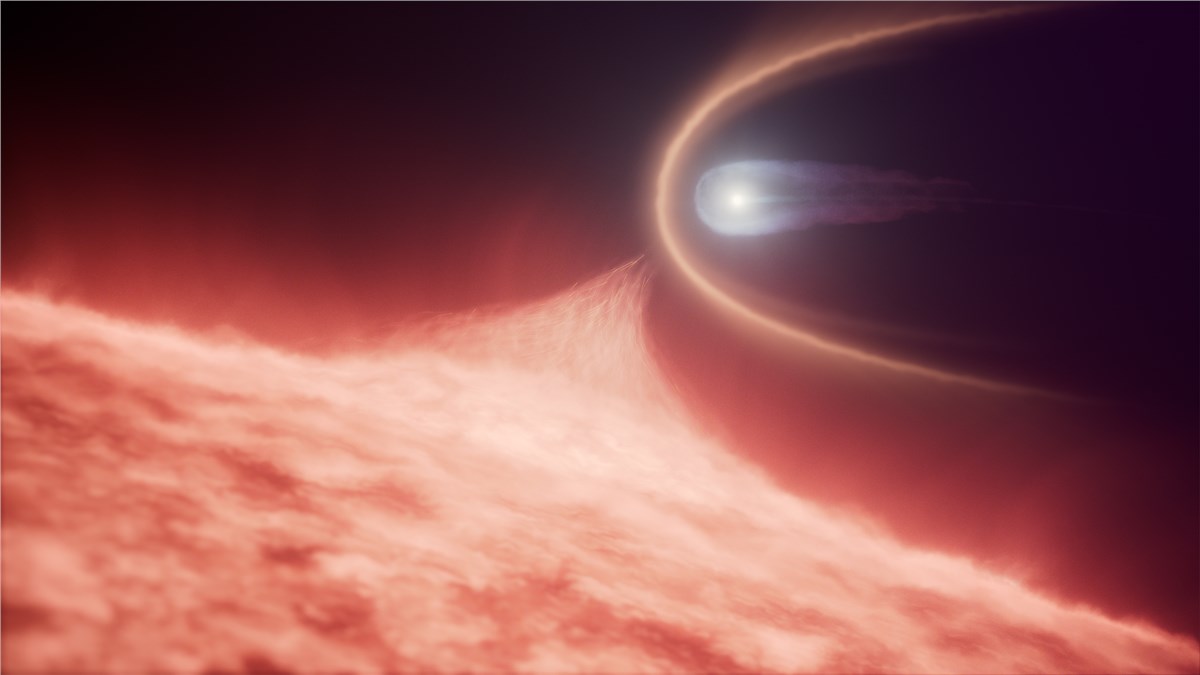Introduction
Peters’ anomaly (PA) is a rare congenital ocular syndrome that could be associated with systemic disorders. Mutations in specific genes, which are SLC4A11, PAX6, PITX2, CYP1B1, and FOXC11 are identified as responsible for the inheritance of this autosomal recessive or dominant condition, however sporadic cases have also been reported.2 Low vision in PA is attributed to multiple factors. The PA syndrome is primarily marked by an opacification of the central cornea, which obstructs the visual axis and leads to decreased visual acuity. Additional factors include thinning or absence of corneal Descemet and Bowman’s membranes, stroma, and endothelium, which contributes to reduced clarity of the cornea due to edema and irregularities.3 Also, abnormalities in the anterior segment of the eye, such as a shallow anterior chamber and iridocorneal adhesion, which further obstruct the visual pathway and decrease vision. PA is classified into three types based on clinical manifestations.4 Type I, which is usually unilateral, is characterized by central corneal cloudiness accompanied by iridocorneal synechiae. Whereas, Type II, which is usually bilateral but often asymmetrical, exhibits central corneal cloudiness along with additional ocular defects that further impair vision in PA. These defects include cataract, glaucoma, iris coloboma, microcornea, microphthalmia, and adhesion between the cornea and the lenticular lens.3 When ocular signs are accompanied by additional systemic signs, including facial defects, bone anomalies, short stature, heart defects and intellectual disability, this condition is classified as Peters’ plus syndrome.5
The incidence of PA is very low and it is reported to be approximately 1.5 per 100,000 births;6 and in other studies it was reported to be in 1 in 5,000–6,000 births,7 and1 in 12,000–15,000 births.8 Despite the low incidence, it leads to significant vision deterioration. Surgical procedures such as cataract extraction,9 corneal transplant,10 and optical iridectomy11 have been employed to enhance vision in patients with PA. However, the diverse ocular phenotypes associated with this syndrome along with the potential presence of amblyopia or glaucoma may result in insufficient visual outcomes following surgical interventions leading to low vision.9,10 Research indicates that 10–50% of cases attained a visual acuity exceeding 20/200 following surgical intervention.5 Consequently, these patients require a functional vision assessment and visual rehabilitation following ocular surgeries to optimize the use of remaining vision through low vision devices, thereby enhancing their independence and improving vision-related quality of life. Herein, this case report discusses family members diagnosed with PA, outlining the functional vision assessments performed and the corresponding visual rehabilitation provided for each individual.
Materials and Methods
A family which consists of a man, his wife, and their three children, two daughters and a son, from the southern region of the West Bank was referred to the Low Vision Center at An-Najah National University for visual function assessment and rehabilitation. A comprehensive ocular and systemic history was initially obtained, followed by a visual assessment utilizing the Lea chart to evaluate visual acuity (VA) at both distance and near. The MARS contrast sensitivity test was employed to measure contrast sensitivity, alongside the Bernell vision disc to assess visual field and peripheral vision and the Precision Vision 16 Hue Test (PV-16) for color vision assessment. Recommendations regarding the use of visual or non-visual aids have been provided based on the visual assessment results of each case, along with their specific needs and goals.
Ethical approval was obtained from the Institutional Review Board (IRB) committee at An-Najah National University, which reviewed and approved the publication of case details (AANS. Jan. 2024/2). All subjects and their parents provided written informed consents, which included permission for the publication of the clinical details. The patients and their parents were fully informed about the nature of the data being used and agreed to its use for publication.
Results
Case I
The 13-year-old daughter has experienced PA, nystagmus, and exotropia since birth. Nevertheless, she has no notable medical history or disabilities. The patient presents with visual impairments at both distance and near, exhibiting better vision in the right eye. She encounters difficulties when reading her school books, which are printed in a font size of 20P and require a viewing distance of 9–10 cm. She writes from a distance of 12 cm using large handwriting (25P). She utilizes her mobile phone at a proximity of 10 to 15 centimeters. She stated a preference for white illumination to improve vision. Furthermore, she experiences difficulty with distance vision, such as reading content on the blackboard in school or viewing television, which she does from a distance of 30 cm from a 30-inch screen. She experiences photophobia. No additional restrictions on activities of daily living were reported. The child wears prescription spectacles to correct her combined myopic astigmatism: right eye −2.00/-2.00 x175 and left eye −2.00/-3.00 x 005, which does not improve her vision. She admitted the use of a 1.5x bar magnifier for reading purposes. The visual assessment of this child revealed a best corrected visual acuity of 6/75 at distance and 6/95 at near in the right eye, while the left eye demonstrated a visual acuity of 6/95 at both distance and near (Table 1), necessitating three times magnification of near materials to achieve sustained reading. The patient demonstrated moderate contrast sensitivity loss in the right eye and severe loss in the left eye, along with abnormal eye movements in both eyes. Color vision remained normal, while visual field assessment revealed a restriction in both eyes.
|
Table 1 The Visual Acuity for the Four Cases Was Calculated Based on the Read M Size and Test Distance
|
This child’s visual impairment was classified as moderate according to international health standards.12 Based on her visual demands and goals to improve vision for near and distance tasks, along with her preference for visual aids, she was prescribed binocular spectacle magnifiers of +12.00D for near tasks which improved her near VA to 30P at 25 cm which is sufficient for sustained reading of her school books. A 4x monocular telescope was prescribed for distance viewing and improved her VA to 6/18. It was recommended to utilize additional assistive technology or apply some environmental modification as it can enhance visual functioning, including felt pens and typoscopes, as well as to enhance illumination for writing. Furthermore, positioning oneself closer to the blackboard, approximately 1.5 meters away, was suggested. The use of sunglasses outdoors may reduce the sensation of photophobia.
Case II
The second daughter, aged 11, has been diagnosed with PA, and nystagmus since birth in addition to aniridia, exotropia and spherocoloboma. Nevertheless, she has no notable medical history or disabilities. The patient reports experiencing visual difficulties at both distance and near, exhibiting better vision in the right eye.
She encounters difficulties when reading her school books, which are printed in a font size of 20P and require a viewing distance of 11 cm. She writes from a distance 17 cm with large handwriting (30P). She stated a preference for white illumination to improve vision, and she utilizes her mobile phone at a proximity of 10 to 15 centimeters. Furthermore, she experiences difficulty in seeing the material presented on the blackboard in school or viewing television, which she does from a distance of one meter from a 30-inch screen. She also experiences photophobia and occasionally stumbles while walking, even at home. No additional restrictions on activities of daily living were reported. The child possesses prescription spectacles to address her combined myopic astigmatism: −2.25/-1.50 x75 in the right eye and −5.00/-3.50 x170 in the left eye, which does not improve her vision. She stated the use of a 1.5x magnifying ruler for reading purposes. The visual assessment of this child revealed a visual acuity of 6/60 at distance and at near in the right eye, while the left eye demonstrated a visual acuity of 6/60 at distance and 6/95 at near (Table 1), necessitating three times magnification of near materials to achieve sustained reading. The patient demonstrated moderate contrast sensitivity loss in the right eye and severe loss in the left eye, along with abnormal eye movements in both eyes and abnormal color vision. The visual field assessment revealed a remarkable restriction in both eyes.
This child’s visual impairment was classified as moderate according to international health standards.12 Based on her visual demands and goals to improve vision for near and distance tasks, along with her preference for visual aids, she was prescribed binocular spectacle magnifiers of +12.00D for near tasks which improved her near VA to 20P at 25 cm which is sufficient for sustained reading of her school books. A 4x monocular telescope was prescribed for distance viewing and improved her VA to 6/12. It was recommended to utilize additional assistive technology or apply some environmental modification as her sister.
Case III
The eldest son who is 17 years old also suffer from PA, nystagmus since birth in addition to iridocorneal synechiae which resulted in a very poor vision. Nevertheless, he has no notable medical history or disabilities. The patient presents with visual impairments at both distance and near, exhibiting no preference between the two eyes.
The boy encounters difficulties when reading his school books, which are printed in a font size of 20P and require a viewing distance of 8–9 cm. He writes from a distance 20 cm with large handwriting (30P). He stated a preference for white illumination to improve vision, and he utilizes his mobile phone at a proximity of 10 to 15 centimeters. Furthermore, he experiences difficulty in seeing the material presented on the blackboard in school or viewing television, which he does from a distance of one meter from a 30-inch screen. He also complains from light sensitivity and poor contrast. No additional restrictions on activities of daily living were reported. The child does not use any prescription spectacles nor magnifiers.
The visual assessment of the boy indicated a visual acuity of 6/75 at both distance and near in the right and left eyes (Table 1), necessitating three times magnification of near materials to achieve sustained reading. He demonstrated severe contrast sensitivity loss in both eyes, normal ocular motility, normal color vision, and a remarkable restricted visual field in both eyes.
The patient’s visual impairment was categorized as moderate based on international health standards.12 Considering his visual demands and goals, as well as his preference for visual aids, both visual and non-visual aids or recommendations were provided to him. This boy no longer attends school and requires improvement in his near vision, as he primarily depends on his phone to enlarge text, read street signs, and identify shop names, which is essential for securing suitable employment. Consequently, the boy was recommended to utilize particular mobile applications to increase text size and improve contrast, employ an 8x monocular telescope for distant viewing, and was referred to a local society association focused on economic empowerment for youth with disabilities.
Case IV
The father who is a 50 year old male patient was diagnosed with PA, nystagmus and exotropia since birth which let to severe visual impairment. The patient has a medical history of hypertension and walking difficulties. The patient presents with visual impairments at both distance and near, exhibiting no preference between the two eyes.
The man encounters difficulties when reading, which he does at a very close distance of 3–4 cm. He writes from a distance 8 cm with large handwriting (30P). He stated a preference for white illumination to improve vision, and he utilizes his mobile phone at a proximity of seven centimeters. Furthermore, he experiences difficulty in watching television, which he does from a distance of 20 cm from a 30-inch screen. He also complains from light sensitivity, poor contrast, poor color vision and difficulties in recognizing faces. He has walking difficulties indoor and outdoor. No additional restrictions on activities of daily living were reported. The man does not use any prescription spectacles, but he uses an electronic portable magnifier.
The visual assessment of this patient indicated a visual acuity of 6/600 at both distance and near in the right and left eyes (Table 1), necessitating at least 12 times magnification of near materials to achieve sustained reading. He demonstrated severe contrast sensitivity loss in both eyes, abnormal ocular motility, abnormal color vision, and a remarkable restricted visual field in both eyes.
The visual impairment of this patient was categorized as severe based on international health standards.12 Considering the patient’s visual requirements and objectives to enhance near vision for reading and mobility, a portable video magnifier was prescribed to enlarge text and improve contrast, along with a recommendation to increase illumination during reading. The patient was advised to utilize a cane while getting around.
Case V
A 49-year-old mother. She has no prior history of PA or any other ocular conditions. She experienced significant stress and overwhelm, leading to her referral to a mothers’ counseling group for emotional support.
Discussion
PA is a disease of the anterior ocular segment primarily characterized by corneal cloudiness and anterior segment synechiae, often resulting in significant visual loss.3,4 The severity of visual impairment is affected by various ocular defects, including iridocorneal synechiae, microphthalmia, glaucoma, and cataract.3,4 This case series presents four family members, a father and his three children, who exhibit distinct phenotypic variations of PA, leading to differing degrees of low vision and rehabilitation requirements.
Vision loss in PA is primarily caused by the central corneal opacity, which obstructs the visual axis.3,4 In this family, the father and three children exhibited this ocular finding. Additional factors contributing to low vision included glaucoma, nystagmus, and structural anomalies such as coloboma and aniridia. The two daughters exhibited nystagmus and exotropia, potentially due to early onset visual deprivation. The younger daughter also has aniridia and spherocoloboma, further reducing her visual function. Additionally, both daughters demonstrated compound myopic astigmatism, complicating their ability to achieve functional vision and succeed in school. The brother exhibited only nystagmus and iridocorneal synechiae. The father experienced severe visual impairment due to advanced corneal opacity, resulting in a significant reduction in vision and contrast sensitivity. The condition greatly affected his reading skills and mobility.
Rehabilitation approaches were individualized and tailored to the unique functional needs of each family member. For school-aged children, magnifiers and telescopes were provided to assist with near tasks and viewing the blackboard, respectively. Additionally, to non-optical aids such as felt pens and typoscopes were included. Research indicates that these tools can improve reading skills and academic performance in schoolchildren with low vision.13,14 Furthermore, additional educational and environmental modifications were suggested, including preferential seating in the classroom, extended test duration, and the use of digital learning materials.
An alternative approach was implemented for the older son, focusing on smartphone-based magnification applications and accessibility features to support independent reading and digital engagement. Research indicates that mobile technologies are both effective and well-accepted among people with visual impairment, significantly enhancing their functional independence.15,16
The father with the most profound visual impairment was prescribed a portable electronic magnification device to address his high magnification needs. Additionally, he received guidance on orientation and mobility strategies, including the use of a white cane, which is essential for the rehabilitation of individuals with severe vision loss.17 However, the lack of accessible infrastructure raises concerns about the safe movement.17,18 It is important to address the social and psychological burden of vision impairment.19 The final member of this family is the mother, although she is unaffected by this syndrome, she was referred to a counseling group for mothers to help her cope with emotional stress and social stigma.
All individuals received training on the appropriate use of the optical or non-optical devices, which is essential for successful visual rehabilitation.20 They were also advised to follow up with their ophthalmologist to monitor the progression of the disease.
Conclusion
This case series highlights the wide phenotypic variability and multi-dimensional impact of PA. Functional vision assessment and appropriate vision rehabilitation can assist affected individuals in improving their vision-related quality of life. Different visual aids, rehabilitation methods, or advice can be tailored to each case of the same disease based on individual needs, goals, and lifestyle. The psychological factors for both affected and non-affected family members should not be neglected. Finally, societal awareness of genetic diseases that affect vision should be enhanced.
Disclosure
The author reports no conflicts of interest in this work.
References
1. Weh E, Reis LM, Happ HC, et al. Whole exome sequence analysis of Peters anomaly. Hum Genet. 2014;133(12):1497–1511. doi:10.1007/s00439-014-1481-x
2. Frydman M, Weinstock AL, Cohen HA, Savir H, Varsano I. Autosomal recessive Peters anomaly, typical facial appearance, failure to thrive, hydrocephalus, and other anomalies: further delineation of the Krause-Kivlin syndrome. Am J Med Genet. 1991;40(1):34–40. doi:10.1002/ajmg.1320400107
3. Elbaz U, Ali A, Strungaru H, Mireskandari K. phenotypic spectrum of peters anomaly: implications for management. Cornea. 2022;41(2):192–200. doi:10.1097/ICO.0000000000002768
4. Bhandari R, Ferri S, Whittaker B, Liu M, Lazzaro DR. Peters anomaly: review of the literature. Cornea. 2011;30(8):939–944. doi:10.1097/ICO.0b013e31820156a9
5. Zaidman GW, Flanagan JK, Furey CC. Long-term visual prognosis in children after corneal transplant surgery for Peters anomaly type I. Am J Ophthalmol. 2007;144(1):104–108.e1. doi:10.1016/j.ajo.2007.03.058
6. Kurilec JM, Zaidman GW. Incidence of peters anomaly and congenital corneal opacities interfering with vision in the United States. Cornea. 2014;33(8):848–850. doi:10.1097/ICO.0000000000000182
7. Bermejo E, Martínez-Frías ML. Congenital eye malformations: clinical-epidemiological analysis of 1,124,654 consecutive births in Spain. Am J Med Genet. 1998;75(5):497–504. doi:10.1002/(SICI)1096-8628(19980217)75:5<497::AID-AJMG8>3.0.CO;2-K
8. Shigeyasu C, Yamada M, Mizuno Y, Yokoi T, Nishina S, Azuma N. Clinical features of anterior segment dysgenesis associated with congenital corneal opacities. Cornea. 2012;31(3):293–298. doi:10.1097/ICO.0b013e31820cd2ab
9. Tătaru CI, Tătaru CP, Preoteasa LD. Surgical approach in type II Peters anomaly – case report. Ron J Ophthalmol. 2022;66(1):101–105.
10. Yang LLH, Lambert SR. Peters’ anomaly. A synopsis of surgical management and visual outcome. Ophthalmol Clin North Am. 2001;14(3):467–477. doi:10.1016/S0896-1549(05)70245-5
11. Spierer O, Cavuoto KM, Suwannaraj S, McKeown CA, Chang TC. Outcome of optical iridectomy in Peters anomaly. Graefe’s Arch Clin Exp Ophthalmol. 2018;256(9):1679–1683. doi:10.1007/s00417-018-4000-2
12. WHO WHO. World report on vision. Organization WH. World Heal Organ. 2019;214(14):180.
13. Singh B, Suwal R, Shrestha R, Adhikari S, Karki S, Khadka D. Bilateral Iridochorioretinal coloboma managed with low vision rehabilitation: a case report. J Nepal Med Assoc. 2023;61(258):184–187. doi:10.31729/jnma.8023
14. Nayar PD, Senjam SS, Christy B, et al. Low vision, vision rehabilitation, and assistive technology. South-East Asia Eye Heal. 2021;267–287.
15. WebAIM: survey of web accessibility practitioners results. Available from: https://webaim.org/projects/practitionersurvey/.
16. Senjam SS, Manna S, Bascaran C. Smartphones-based assistive technology: accessibility features and apps for people with visual impairment, and its usage, challenges, and usability testing. Clin Optom. 2021;13:311–322. doi:10.2147/OPTO.S336361
17. Riazi A, Riazi F, Yoosfi R, Bahmeei F. Outdoor difficulties experienced by a group of visually impaired Iranian people. J Curr Ophthalmol. 2016;28(2):85–90.
18. Gustafson-Pearce O, Billett E, Cecelja F. Testing the effectiveness of a tactile signal to deliver navigation information while the participant’s attention is otherwise engaged. Brit J Vis IMPA. 2009;27(2):147–157. doi:10.1177/0264619609102219
19. Khurana A, Singh M, Malik A, Agarwal P, Chauhan L. Psychological distress among low-vision patients. J Clin Ophthalmol Res. 2024;12(2):110–114. doi:10.4103/jcor.jcor_126_23
20. Langmann A, Lindner S, Kollegger E. Low-vision training for better usage of magnifying visual aids. Ophthalmologica. 1994;208(2):92–94. doi:10.1159/000310459














